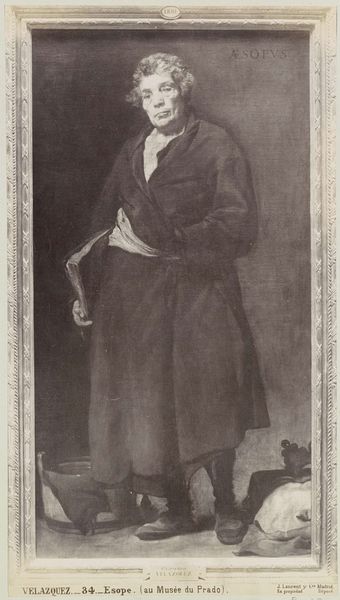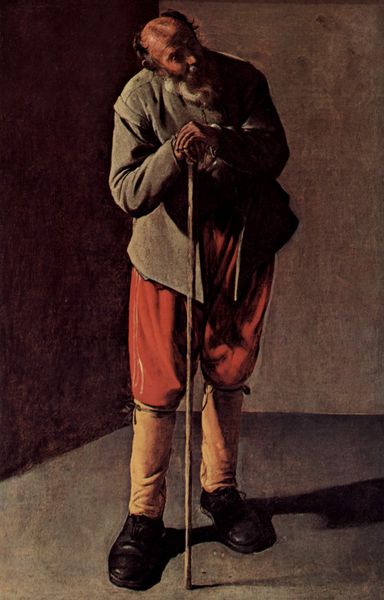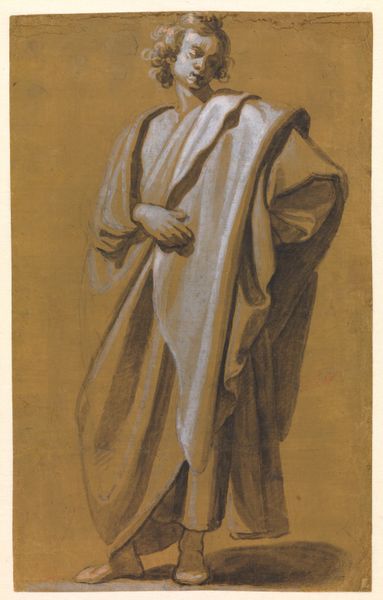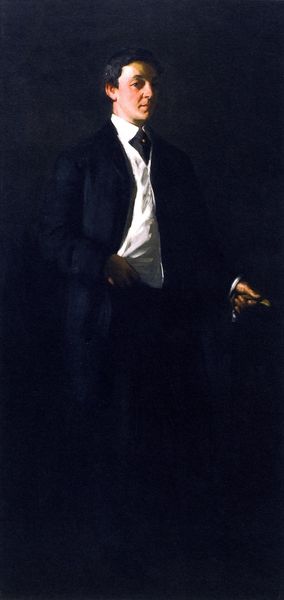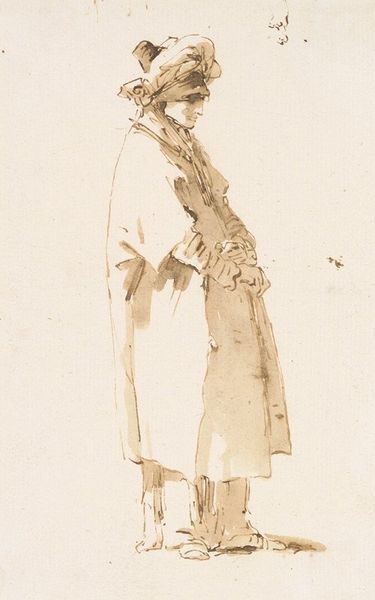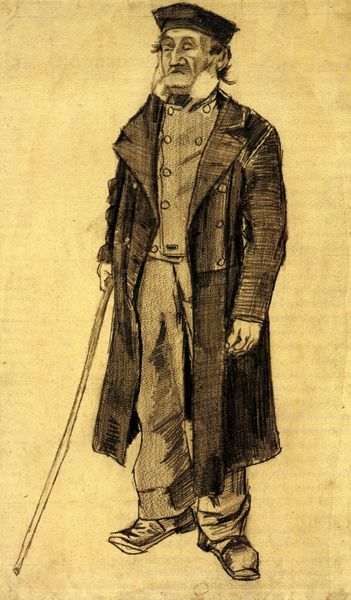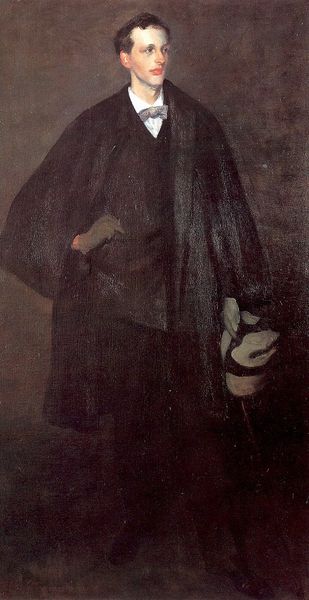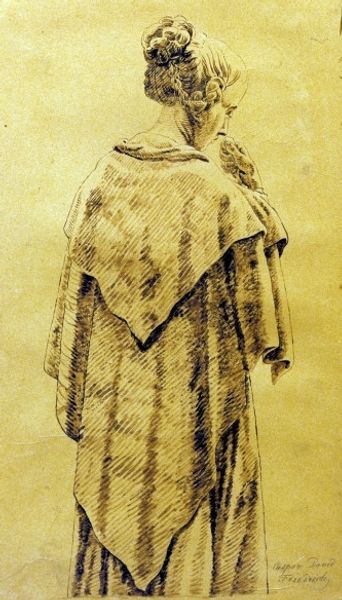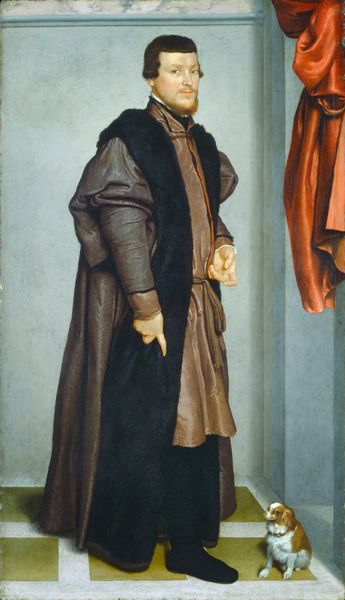
painting, oil-paint
#
portrait
#
baroque
#
painting
#
oil-paint
#
oil painting
#
genre-painting
#
realism
Dimensions: 93 x 180 cm
Copyright: Public domain
"Aesop" was painted in the mid-17th century by Diego Velázquez, a time when Spain was a major global power, with a complex social hierarchy. Velázquez, as court painter, often depicted royalty and the elite. This painting however portrays Aesop, the ancient Greek fabulist, traditionally thought to have been enslaved. Here, Velázquez offers us a vision of a man, who would have been considered other. He stands in common dress holding a book. The artist acknowledges Aesop’s wisdom but also seems to acknowledge his social position through the painting's earthy tones and the downcast expression on his face. The painting perhaps reflects Velázquez’s own position as an artist within the rigid social structure of the Spanish court. It also seems to propose that wisdom can be found in unexpected places and people. Velázquez avoids romanticizing his subject. Instead, he presents a complex, dignified, and compelling vision of a man whose stories continue to resonate today.
Comments
No comments
Be the first to comment and join the conversation on the ultimate creative platform.
